Measurement and uncertainty
Bayesian Methods for Ecological and Environmental Modelling
UKCEH Edinburgh
Recap
Recap
- Bayesian basics
- inference using conditional probability
- MCMC
- how to implement Bayesian inference
- Linear Modelling
- Bayesian estimation of simple model parameters
- \(y = \alpha + \beta x + \epsilon\)
Recap
- Model selection & comparison
- how to choose between competing models
Questions?
Measurement and uncertainty
Terminology for measurements
- “The Facts”
- Evidence
- Observations
- Measurements
- Data
Terminology for measurements
- “The Facts”
- Evidence
- Observations
- Measurements
- Data
All the same thing, increasing uncertainty. 
Measurements and uncertainty
Measurements are a proxy for true process of interest. Connection between the two can be:
- sample from population (sampling error)
- imperfect measurements (measurement error)
Measurements and uncertainty
Measurements are a proxy for true process of interest. Connection between the two can be:
- proxy variables
- true variable is hard to measure but can be approximated
Measuring stream flow
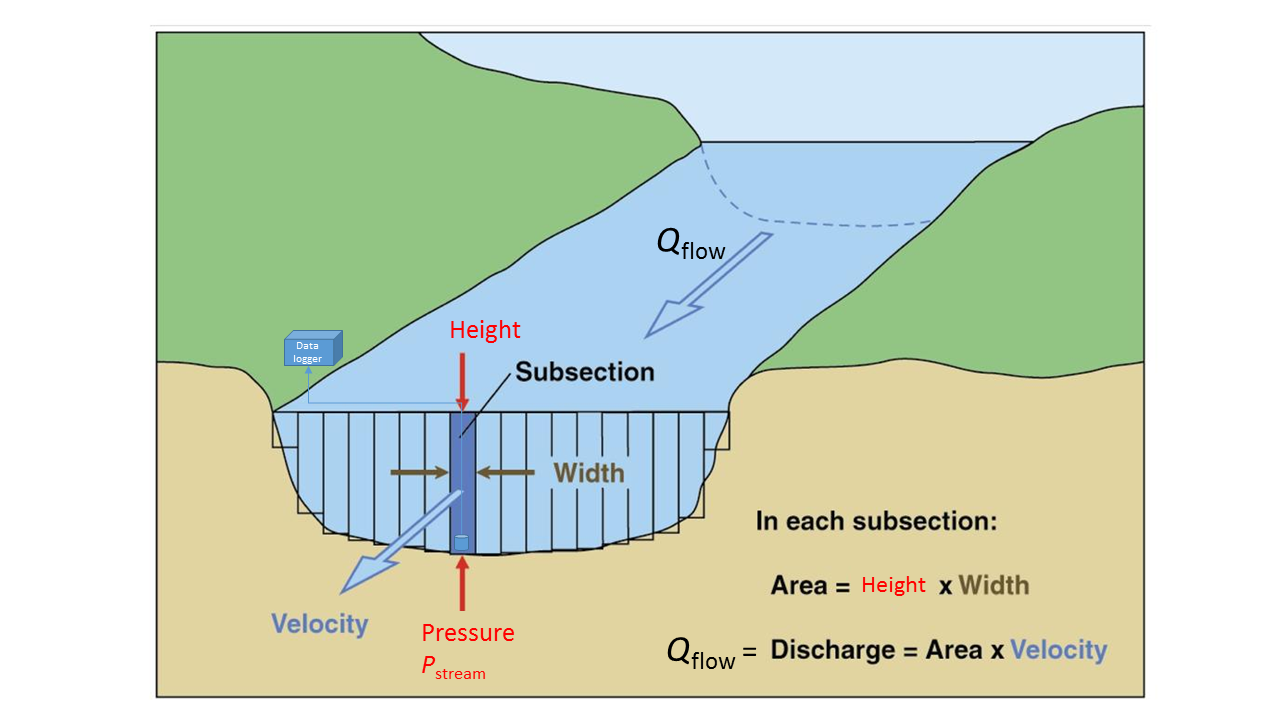
The stream flow rate \(Q\) is the product of the stream cross-sectional area and its velocity. A pressure transducer continuously records stream height \(h\) via the pressure, \(P_{\mathrm{stream}}\).
Measuring streamflow
- We would typically say we have “measurements of streamflow”
- But we actually have measurements of stream height
- or rather water pressure …
- or rather pressure transducer output voltage …
- or rather data logger measurements of voltage.
Streamflow example
We have a series of four linear models:
\[\begin{align*} Q_{flow} =& \beta_1 + \beta_2 h_{stream} + \epsilon_1 \\ h_{stream} =& \beta_3 + \beta_4 P_{sensor} + \epsilon_2 \\ P_{sensor} =& \beta_5 + \beta_6 V_{sensor} + \epsilon_3 \\ V_{sensor} =& \beta_7 + \beta_8 V_{logger} + \epsilon_4 \end{align*}\]
We effectively assume these models are perfect and the error terms \(\epsilon\) 1-4 are zero.
This is a relatively simple case, and some of these errors may well be negligible. Many cases are not so simple.
Streamflow example
We can substitute one model in another:
\[\begin{align*} \label{eq:strr} Q_{flow} =& \beta_1 + \beta_2 (\beta_3 + \beta_4 P_{sensor} + \epsilon_2) + \epsilon_1 \\ P_{sensor} =& \beta_5 + \beta_6 V_{sensor} + \epsilon_3 \\ V_{sensor} =& \beta_7 + \beta_8 V_{logger} + \epsilon_4 \end{align*}\]
to give a single model:
\[\begin{align*} \label{eq:stream3} Q_{flow} = \beta_1 +& \beta_2 (\beta_3 + \beta_4 (\beta_5 + \beta_6 (\beta_7 + \beta_8 V_{logger} \\ +& \epsilon_4) + \epsilon_3) + \epsilon_2) + \epsilon_1 \end{align*}\]
Measurements and uncertainty
Measurements are a proxy for true process of interest. Connection between the two can be:
- proxy variables
- true variable is hard to measure but can be approximated
Measurements and uncertainty
Measurements are a proxy for true process of interest. Connection between the two can be:
- proxy variables
- true variable is hard to measure but can be approximated
Measurements and uncertainty
Measurements are a proxy for true process of interest. Connection between the two can be:
- proxy variables
- true variable is hard to measure but can be approximated
Uncertainty in upscaling
Often, true process of interest is a larger-scale property (e.g. annual sum, regional mean)
- integration
- interpolation / extrapolation,
- accounting for small-scale heterogeneity
- adds additional modelling steps
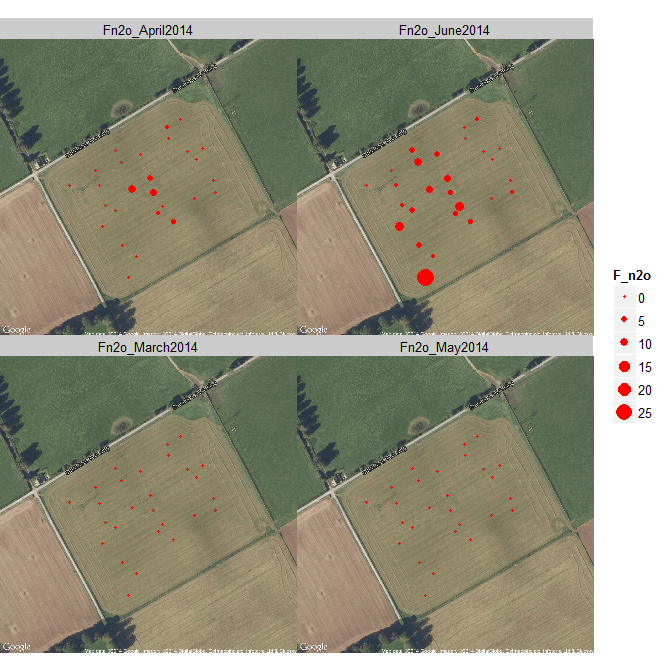
Ignoring measurement error has consequences
But uncertainty often not propagated. Leads to results with:
- under-reported random uncertainty
- low statistical power
- low true positive rate
- under-reported systematic uncertainty
- biases, artefacts
- high false positive rate
Ignoring measurement error has consequences
But uncertainty often not propagated. Leads to:
- high “false discovery rate”
- P(claiming to find effect when none present)
- biased results in literature
The Reproducibility Crisis
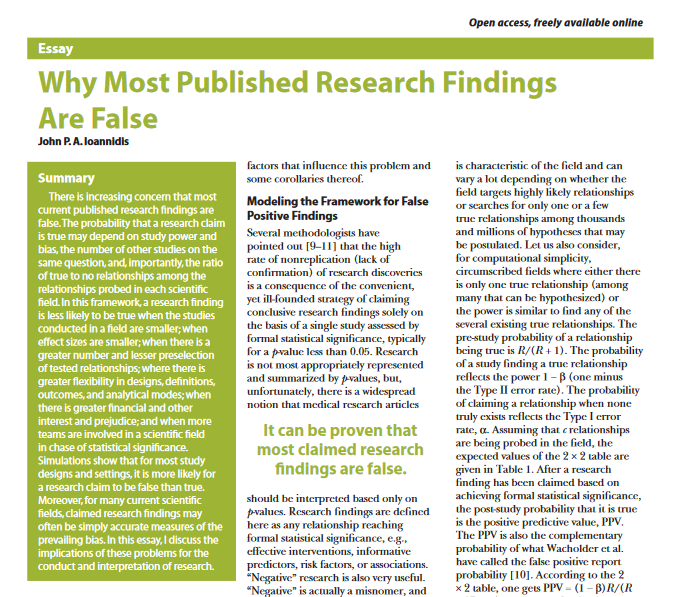
Understanding false discovery rates
“Why most published research findings are false”
High “false discovery rates”, often much higher than 5 %
- Low prior probabilities - unlikely / rare effects
- Low statistical power - low signal:noise
- Bias - systematic uncertainties in observation process
1. Low prior probabilities
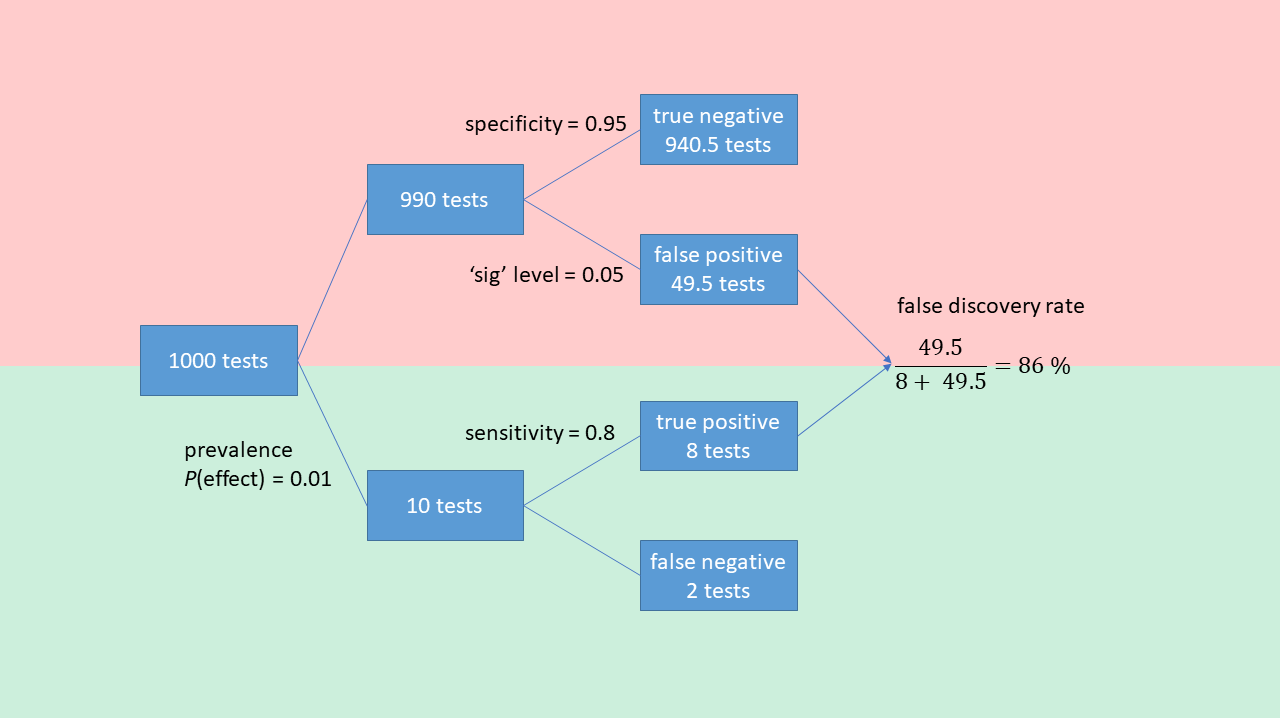
Example: Land-use change
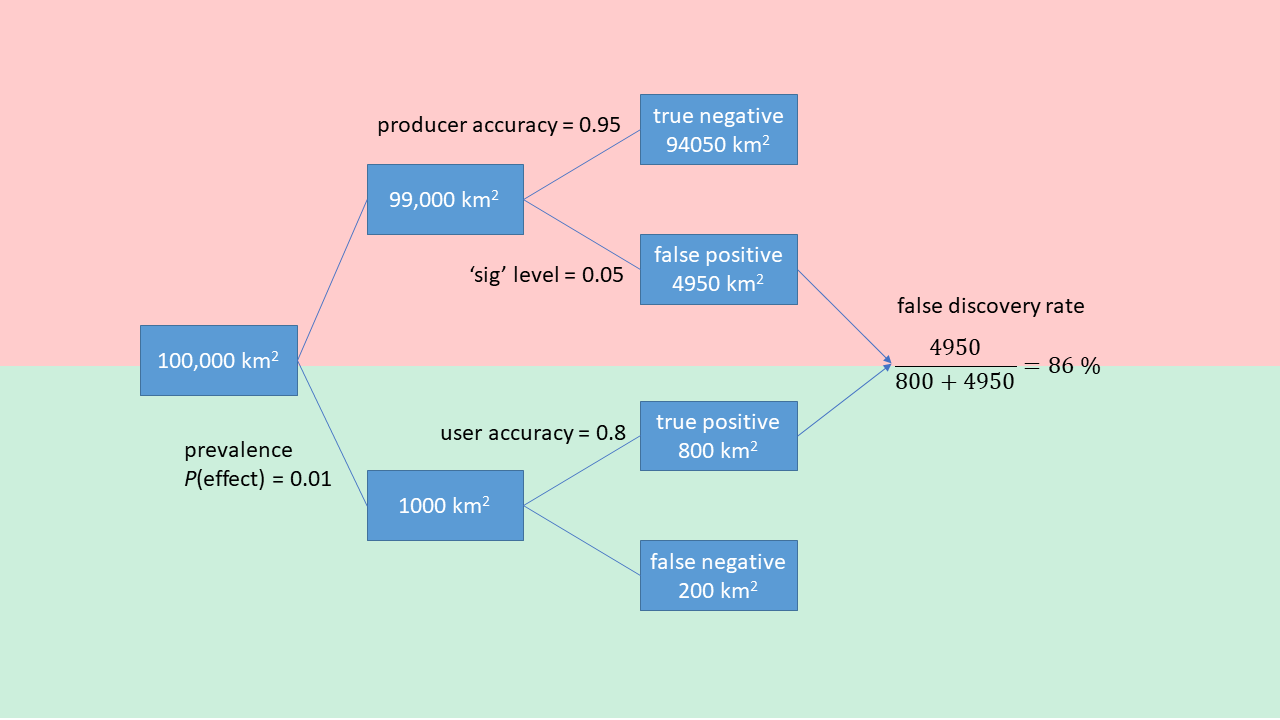
2. Low statistical power
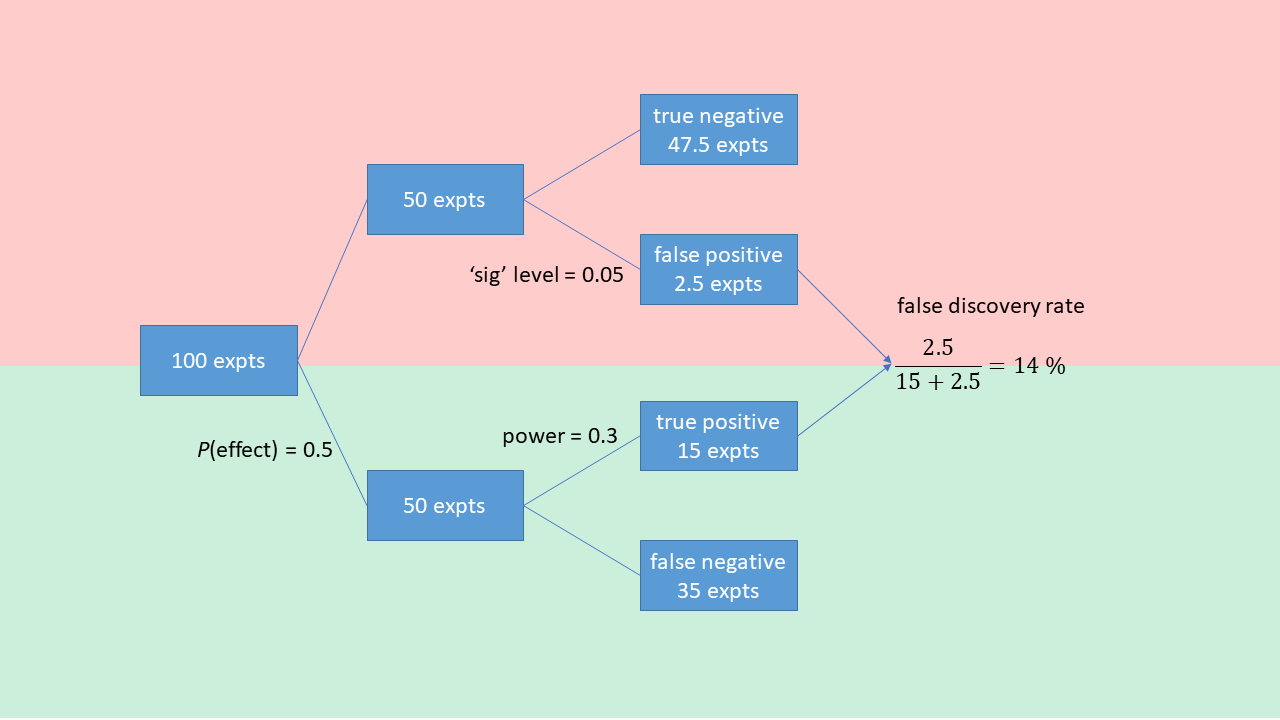
2. Effect of low power
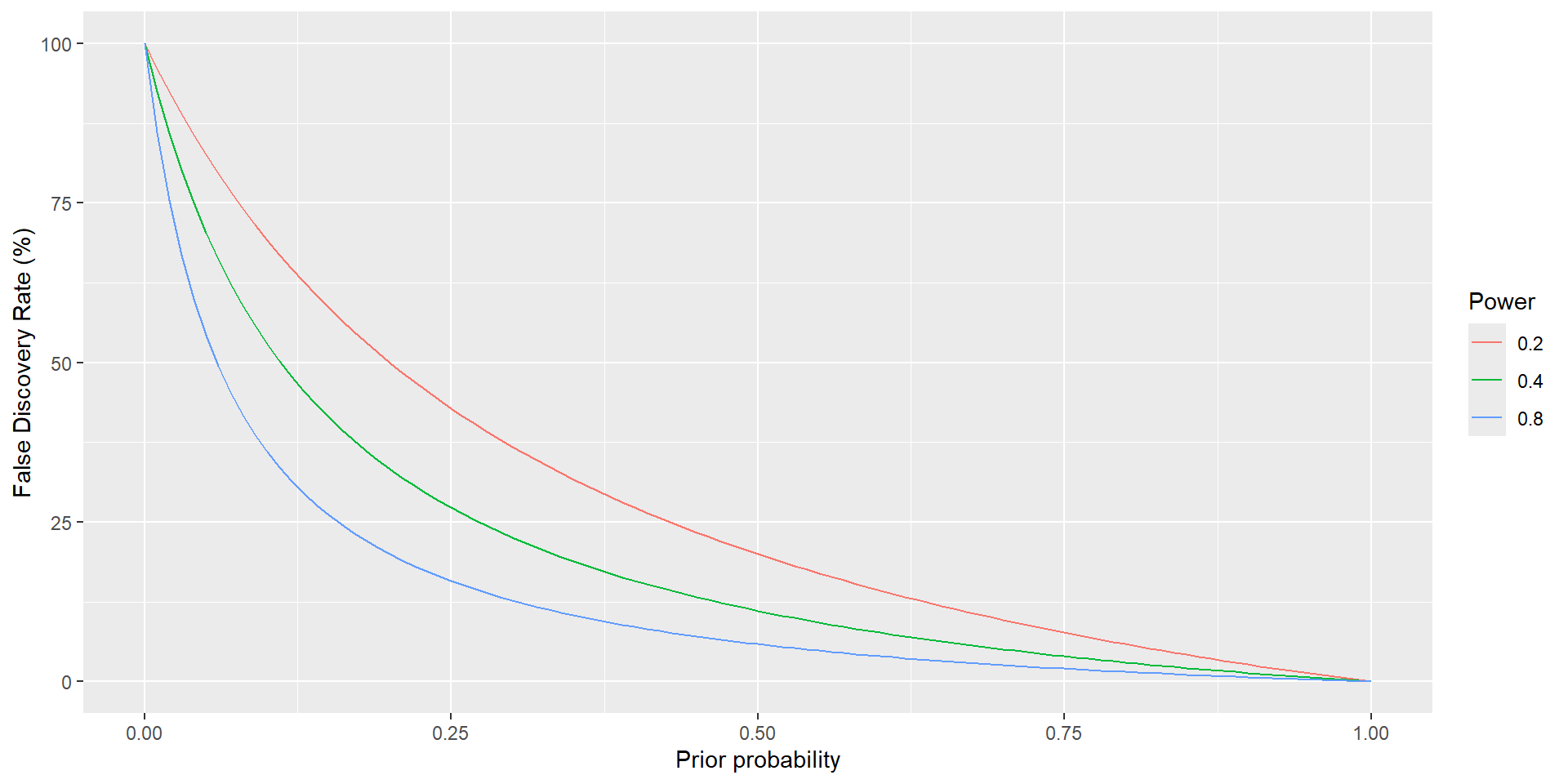
2. Low power in ecology
- large background variability cf. effect size
- difficulty of measurement
- small sample size
- measurement error
- measurements are a proxy for true process of interest
- error not propagated
Example: gas emissions from soil
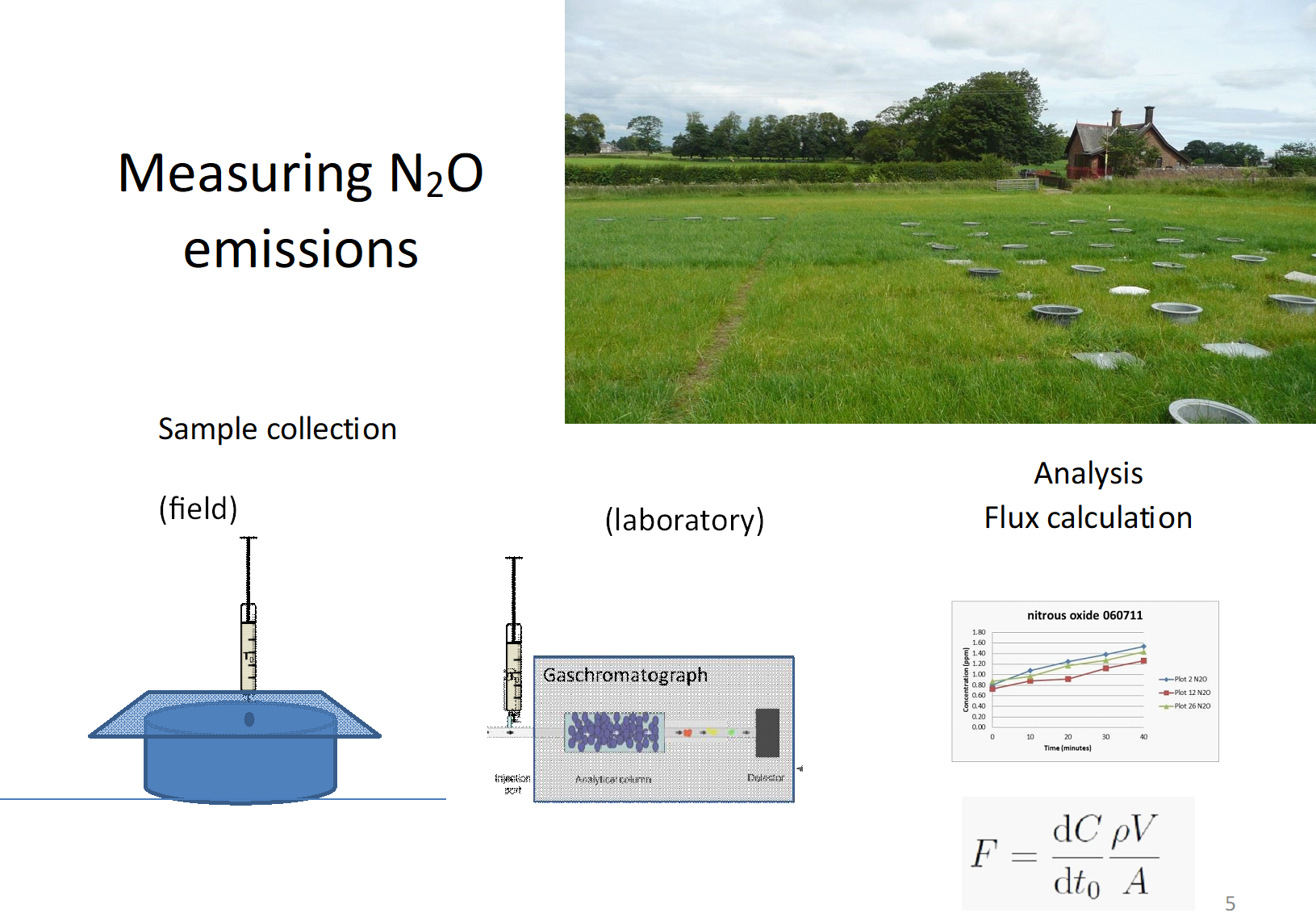
Spatial variation in gas emissions
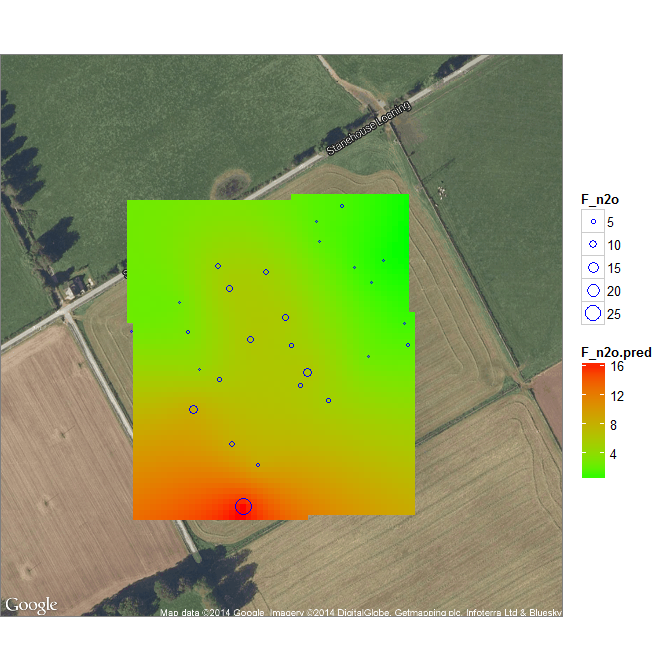
We need cumulative emissions
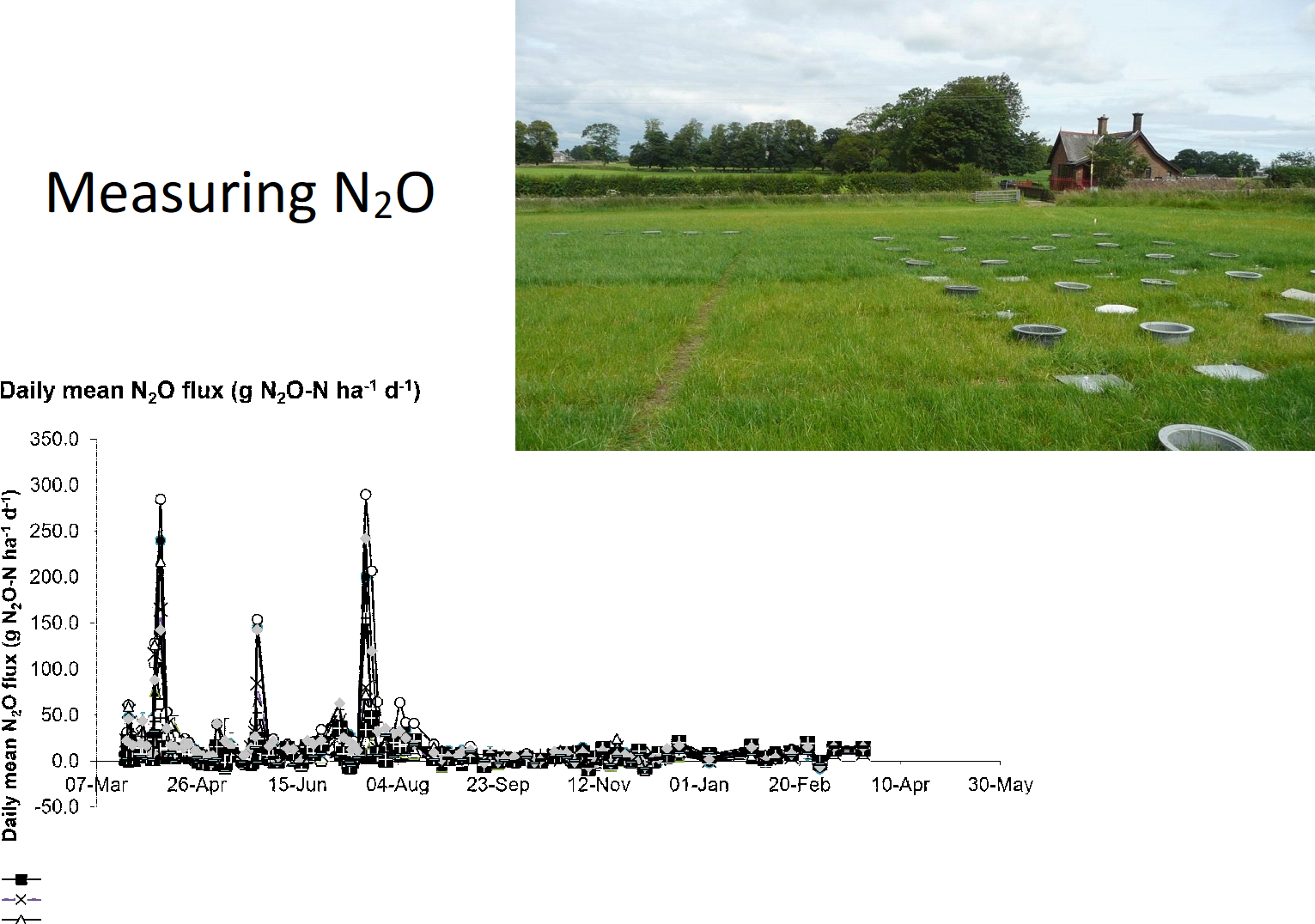
3. Bias in observation process
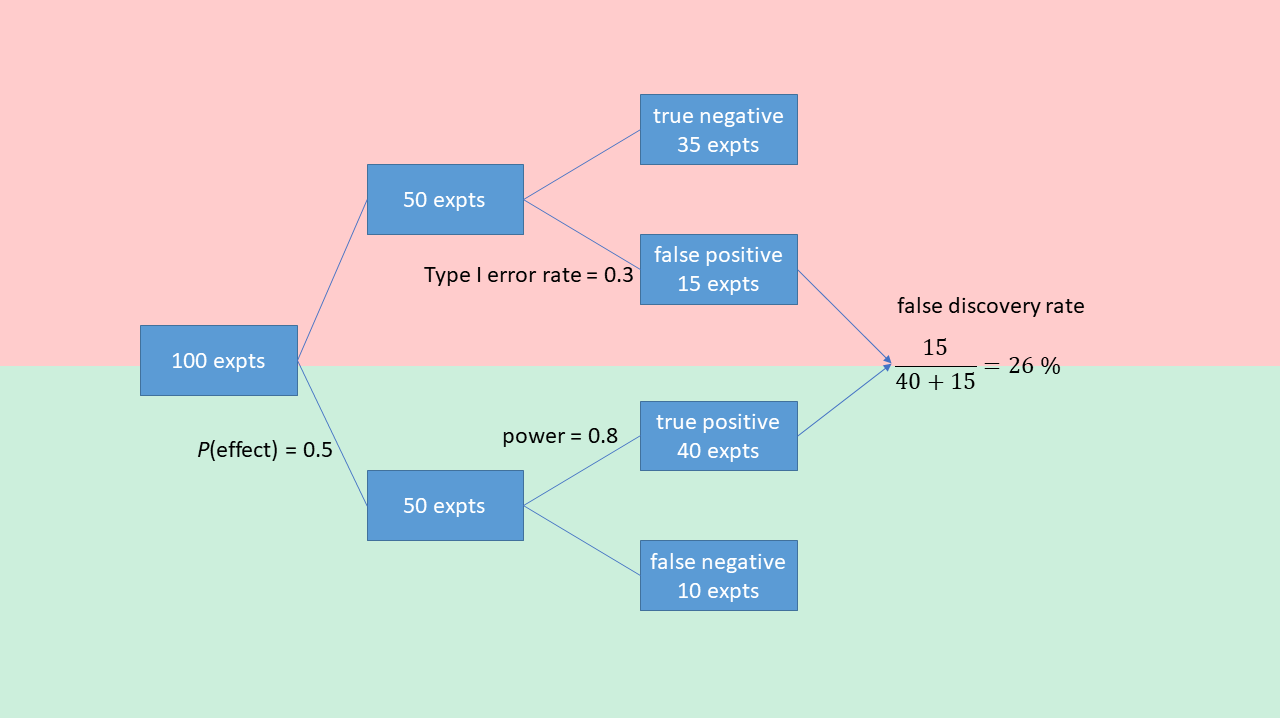
Example: soil carbon change
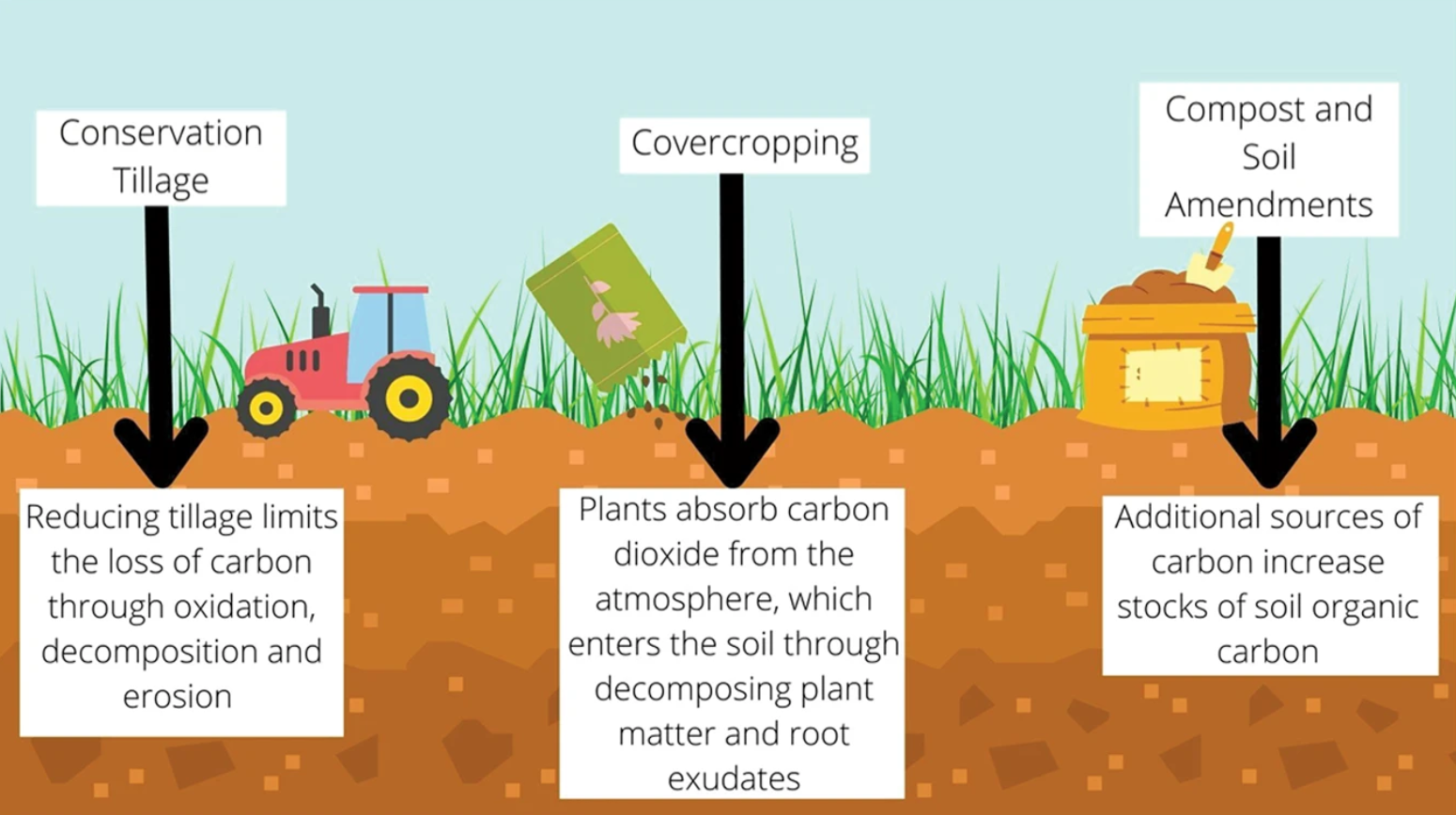
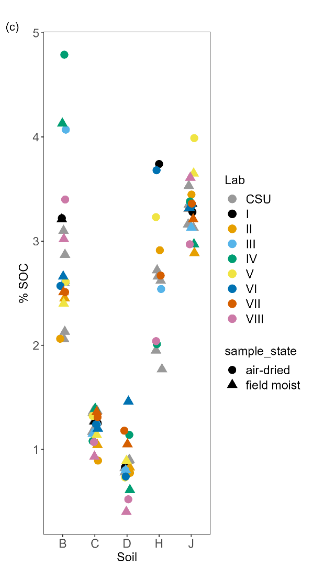
3. Effect of bias
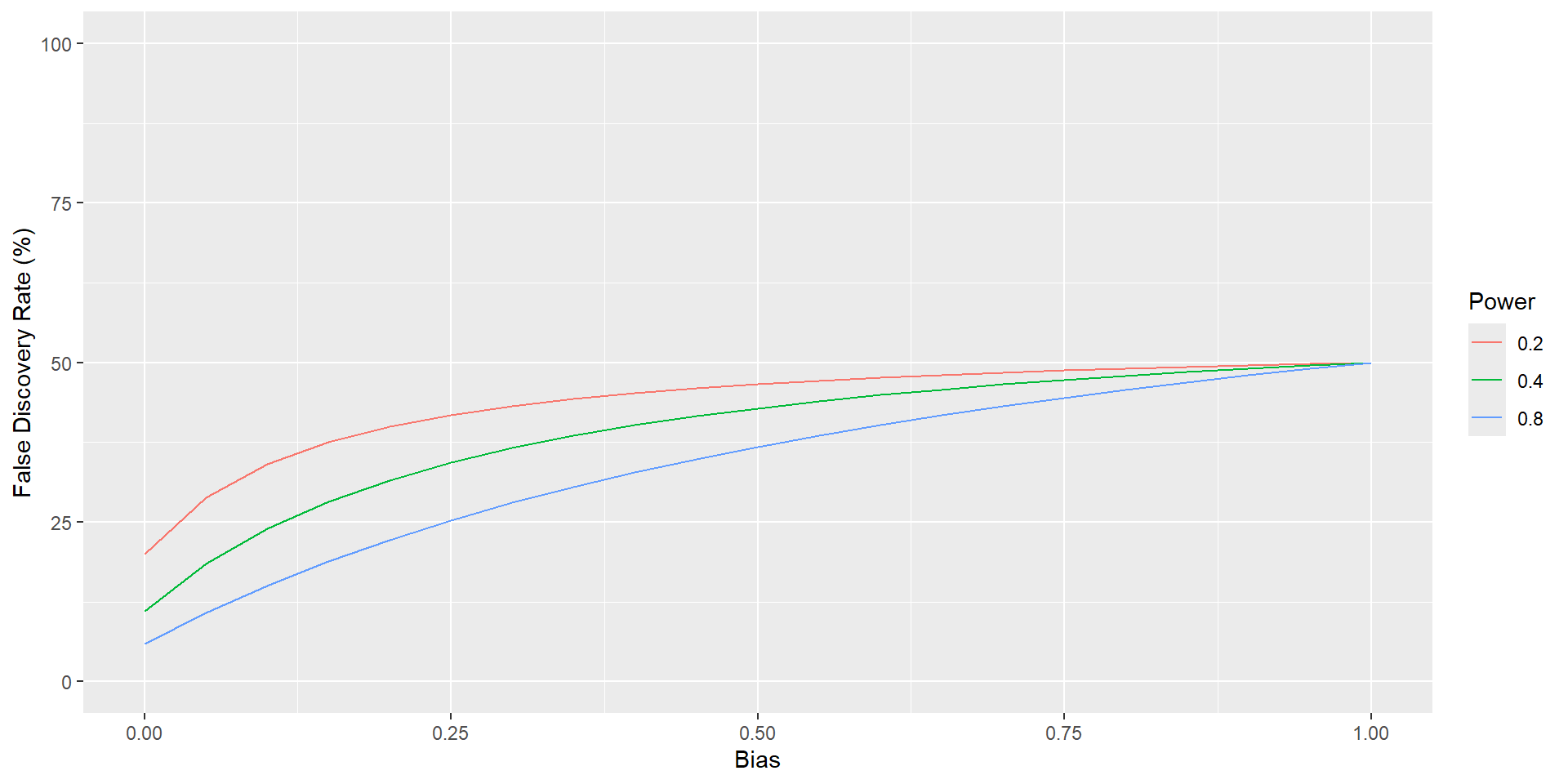
Example: Soil carbon change
Motivation: increasing carbon sequestration in the soil is a potential means to offset greenhouse gas emissions
- farmers can be paid for land management which achieves this
- cover crops, organic manure, reduced ploughing etc.
- detectable as in increase in soil carbon stock
- payments should reflect actual outcomes
Measuring soil carbon: field
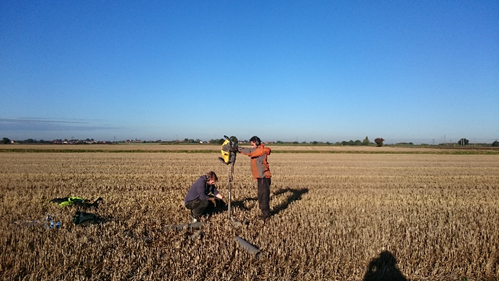
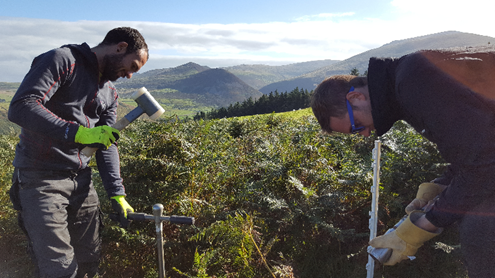 Take soil cores
Take soil cores 
Measuring soil carbon: lab
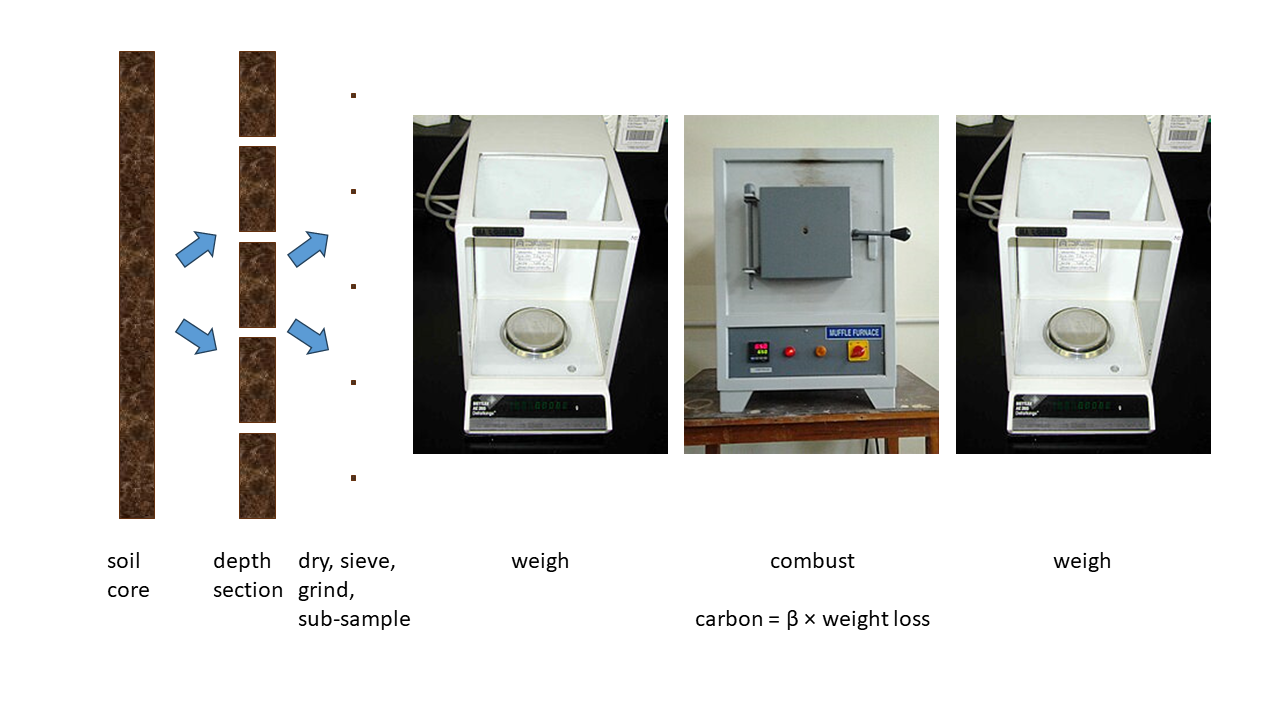
Soil carbon: integrate over depth
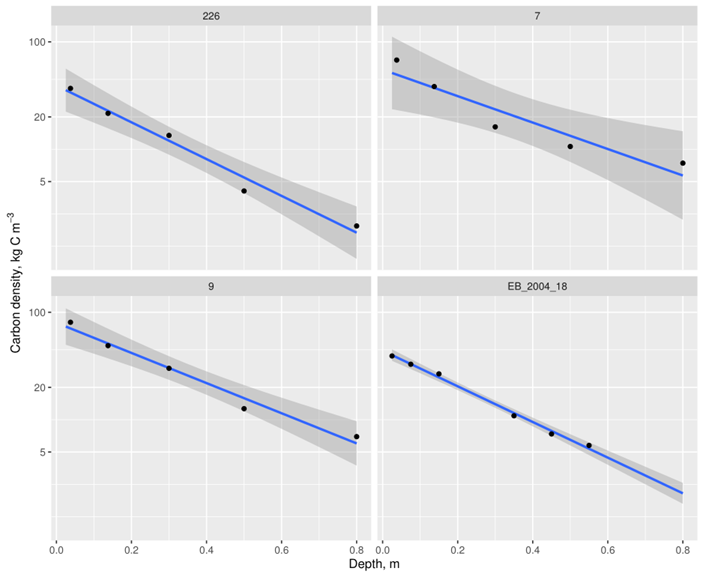
\(\mathrm{log} C = \alpha + \beta \times \mathrm{depth}\)
Soil carbon: integrate over space
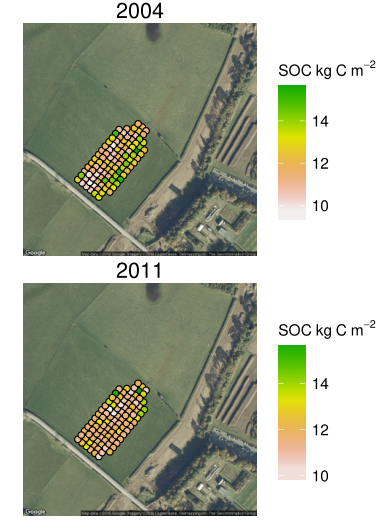
Extrapolate samples to whole field with spatial model
\(\mu_{\mathrm{field}} = f(\theta, C_{\mathrm{samples}})\)
Soil carbon: uncertainties
- We would typically say we have “measurements of soil carbon”.
- But we actually have measurements of weight loss
- from a sample of a sample …
- from which we predict carbon fraction with a model …
- and predict carbon stock to depth with a model …
- and extrapolate this in space with a model …
- and we (usually) ignore most of the uncertainties!
Soil carbon: uncertainties
It gets worse.
- Systematic uncertainties (bias) from different:
- surveyors
- sampling protocols
- areas & depths sampled
- labs & instruments
- lab protocols
- very hard to be consistent over ~20 years.
Soil carbon: same soil, different labs

Soil carbon: real data
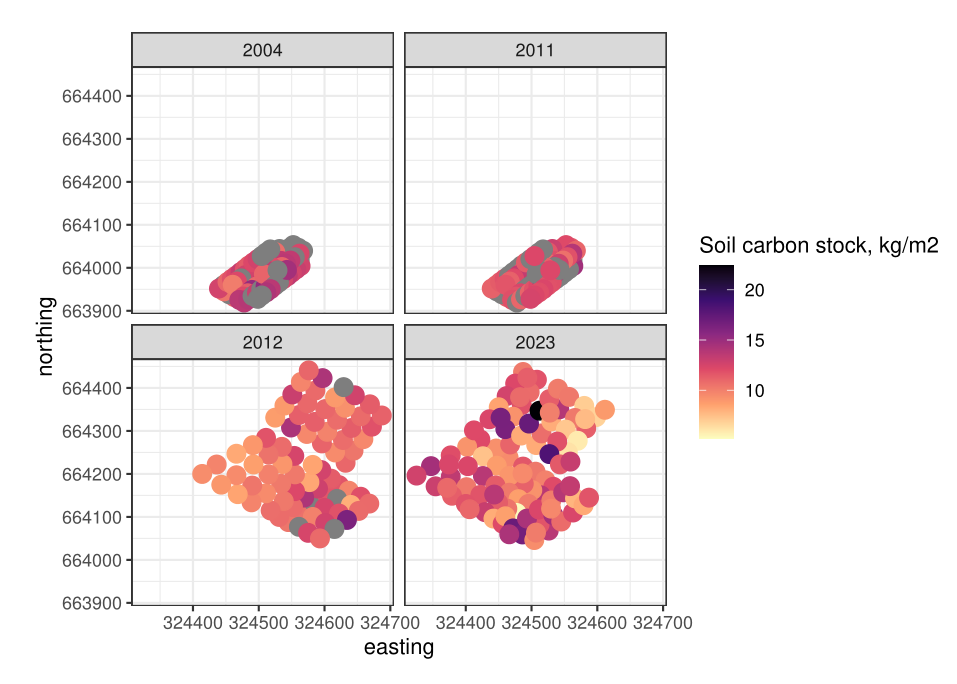
Soil carbon: real data
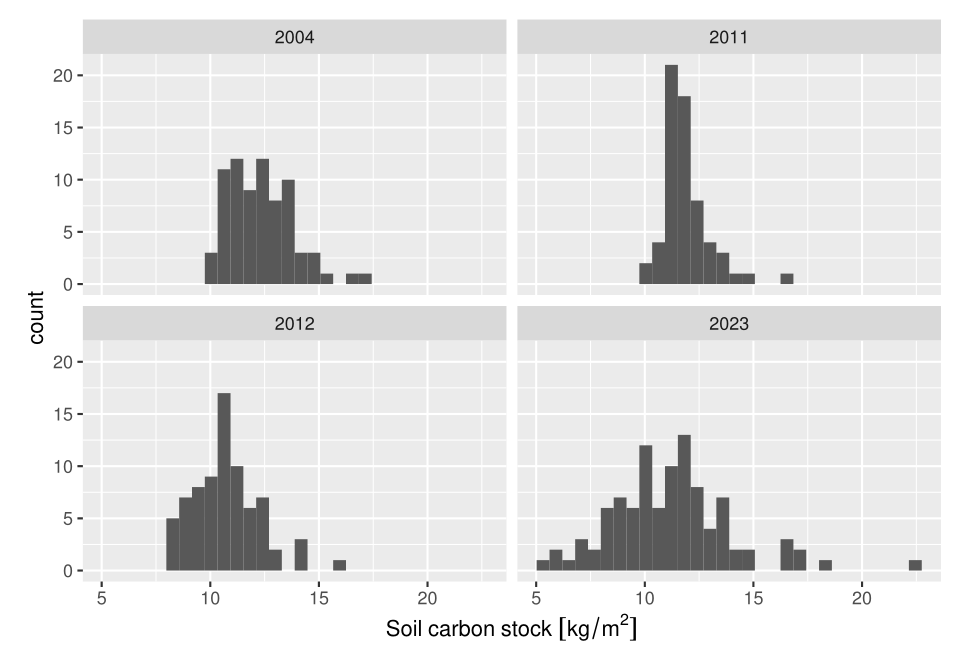
Practical
Estimating false discovery rates
Propagating uncertainty
“Why most published research findings are false” - the other reasons
“Why most published research findings are false”
- “The garden of forking paths”
- many possible choices in data collection & analysis
- choices favour finding interesting patterns
- Motivated cognition
- “the influence of motives on memory, information processing & reasoning.”
“Why most published research findings are false”
- The multiple testing problem

“Why most published research findings are false”
- The multiple testing problem
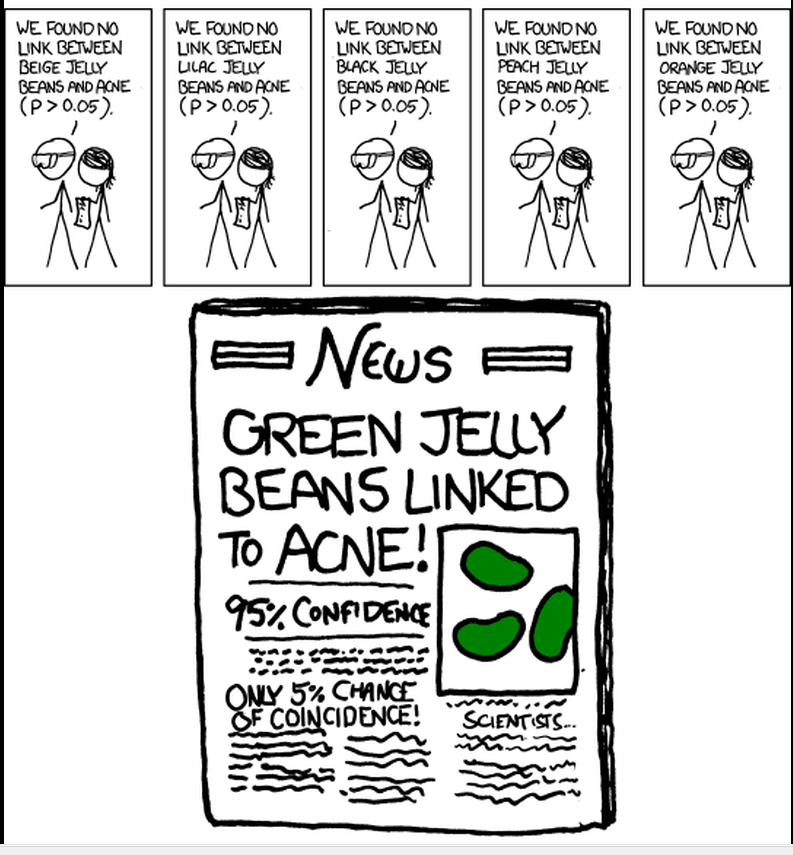
Unpublished work as Dark Matter
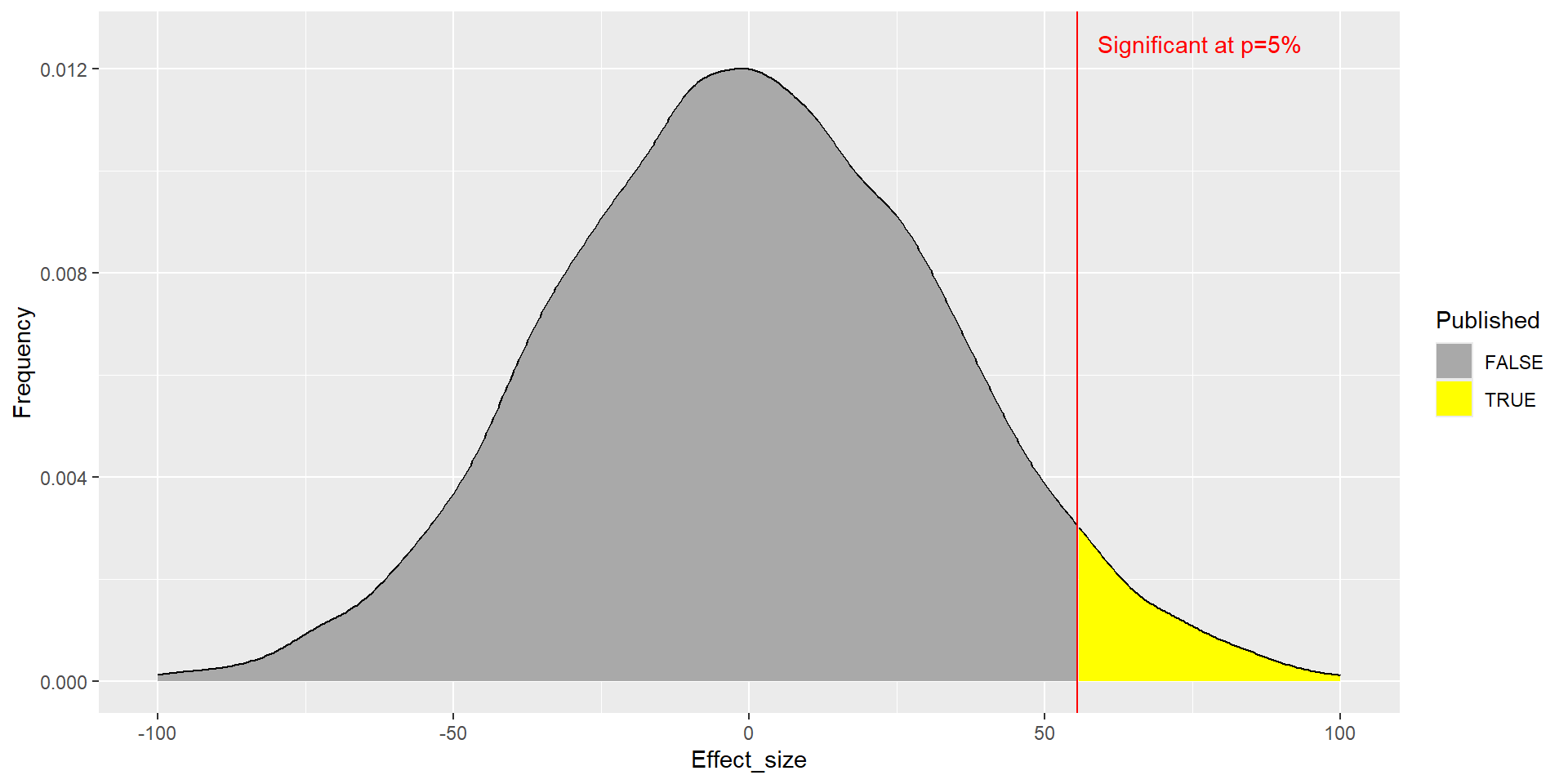
We can only see 5% of the universe.
Solutions
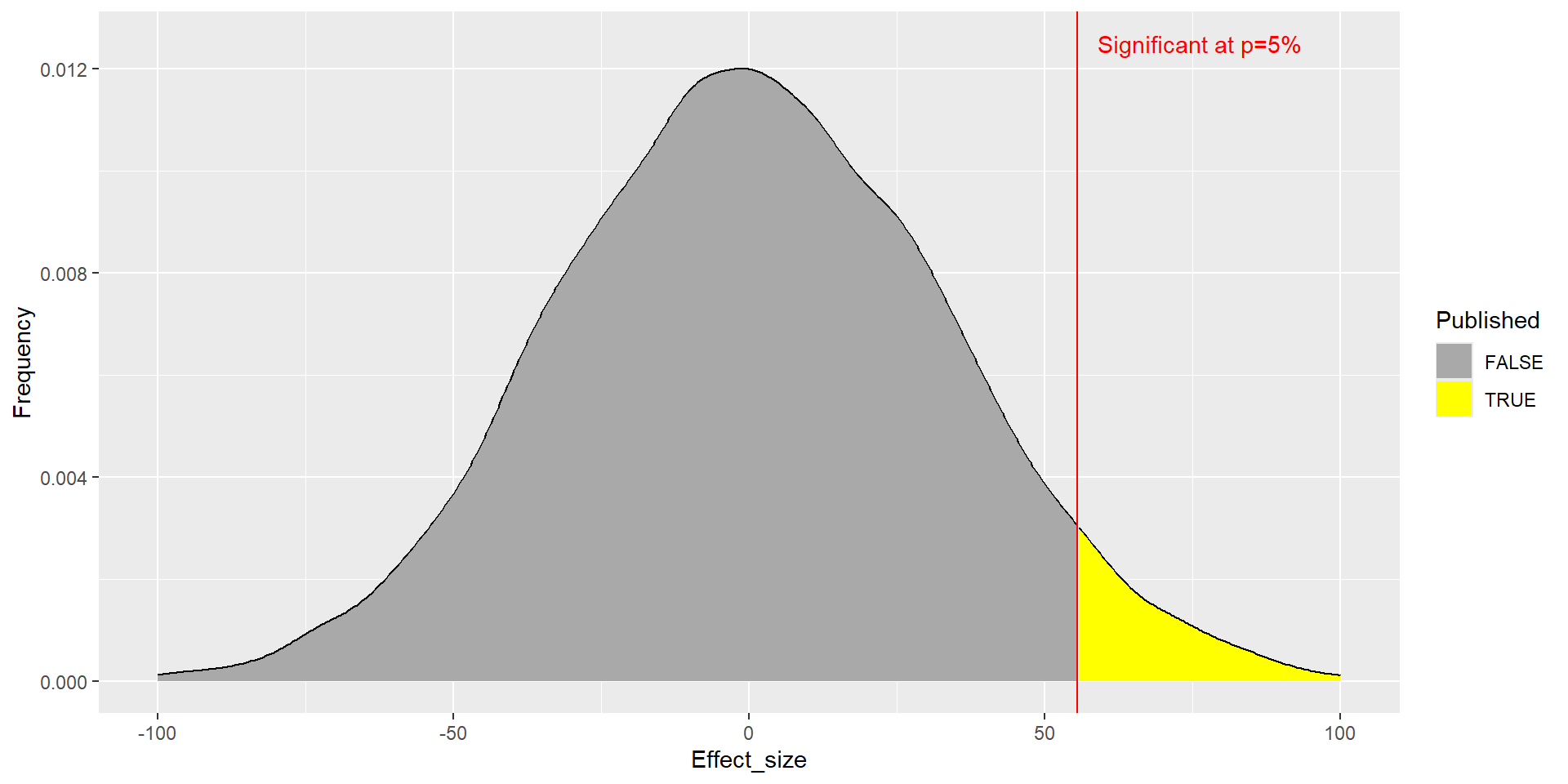
Don’t focus on testing a null hypothesis.
Solutions
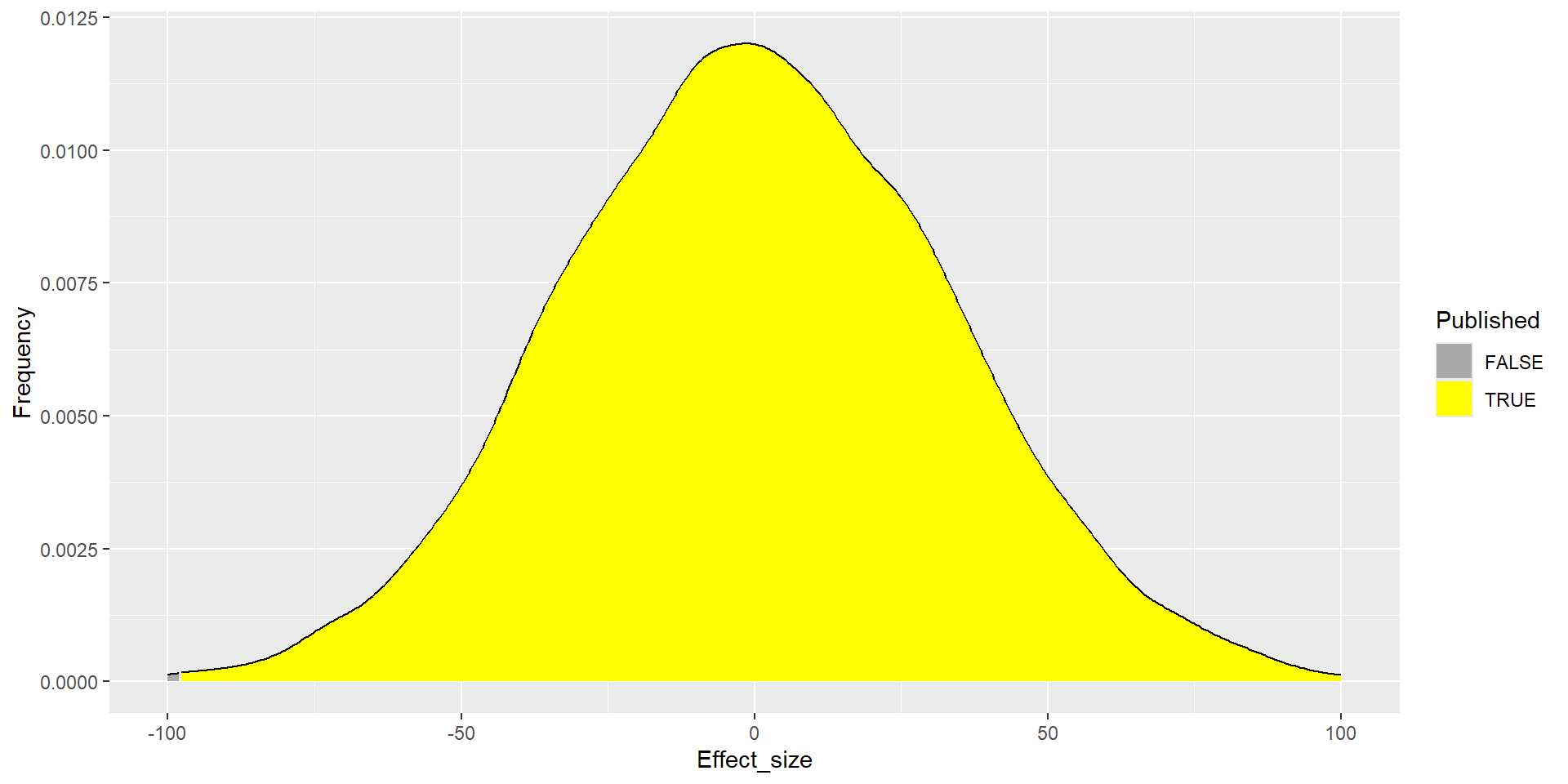
Pre-register and publish all results.
The ASA statement
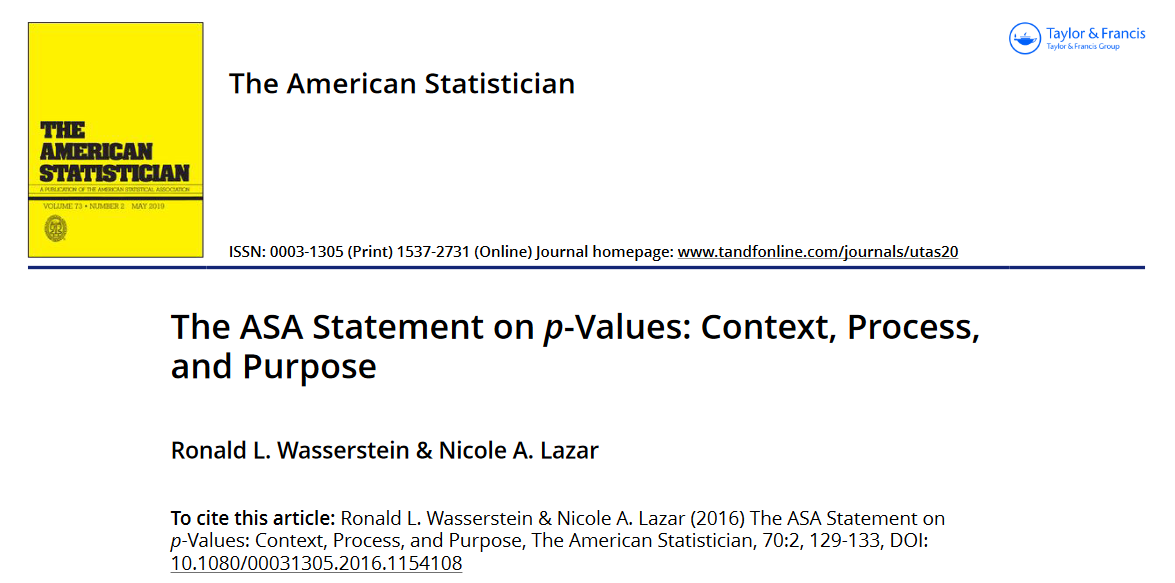
2016
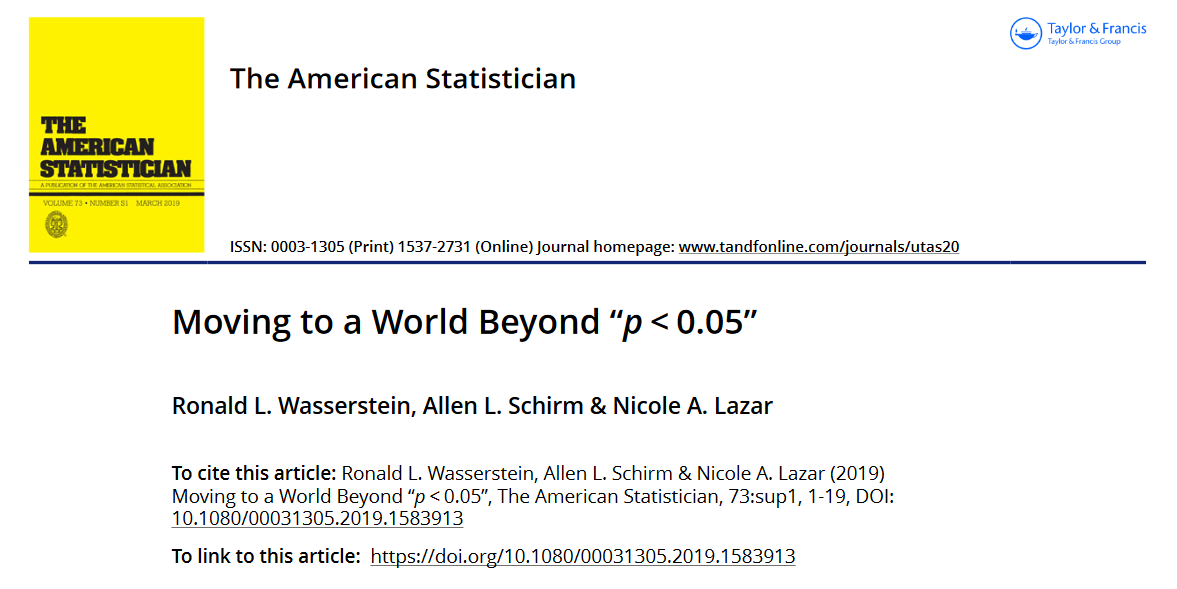 2019
2019
Stop using p values and “statistical significance”.
Solutions
- use Bayesian approach (not NH testing)
- change journal policies
- registered reports
- pre-register experimental design
- report all results (negative & positive)
Summary
- we confuse measurements with “facts”
- measurements are proxies connected to true process
- usually some form of model involved
- important to recognise uncertainties in the observation process
Summary
Ignoring uncertainties leads to:
- high “false discovery rate”
- P(claiming to find effect when none present)
- biased results in literature
- the “reproducibility crisis”
Summary
The Bayesian approach:
- avoids null-hypothesis testing
- incorporates prior knowledge \(P(\mathrm{effect})\) or \(P(\theta)\)
- propagates errors explicitly
- use hierarchical models to represent measurement error
Summary
“All models are wrong, but some are useful.”
George Box, 1976.
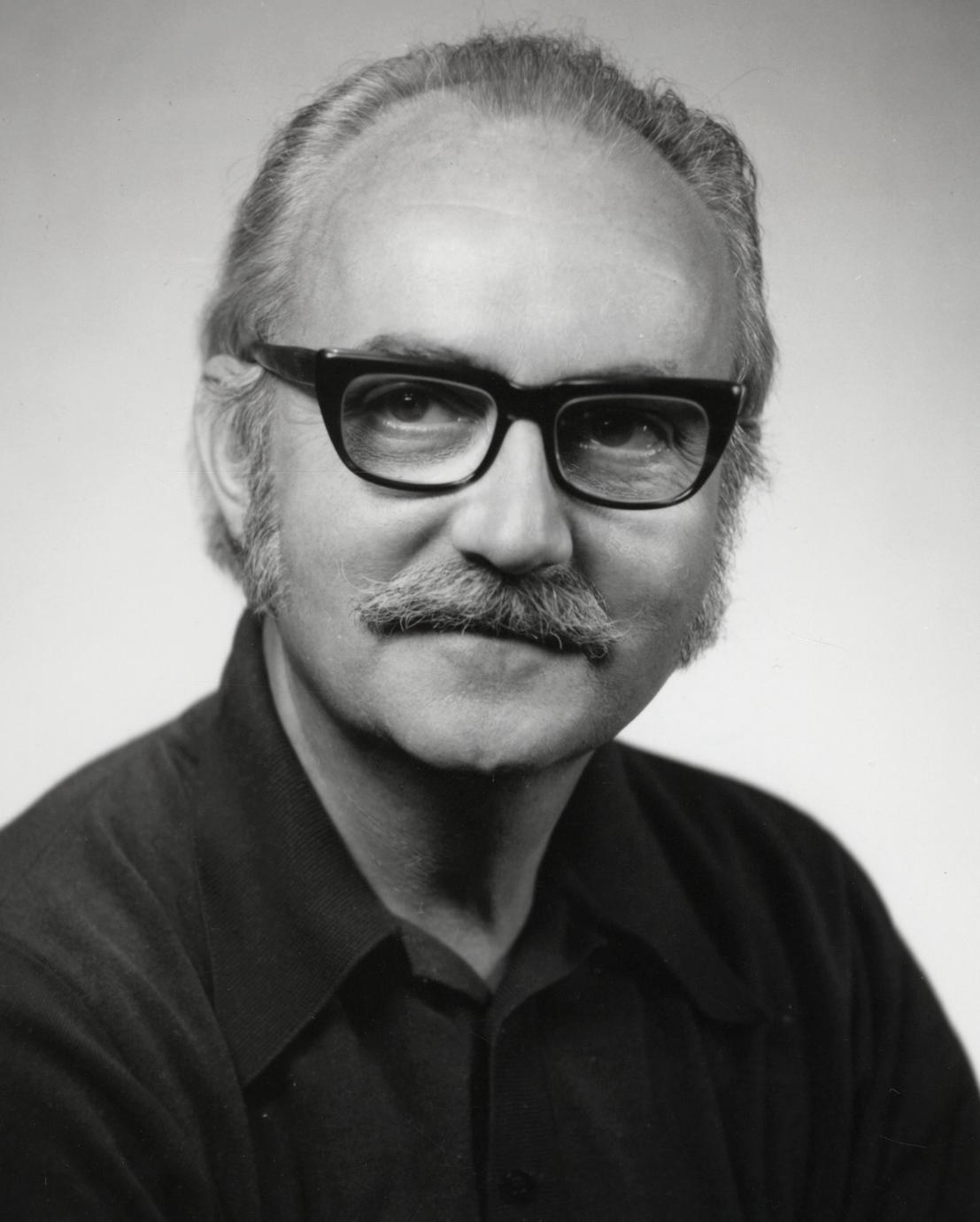
Summary
“All models are wrong, but some are useful.”
George Box, 1976.

“All data are wrong, but some are useful.”

